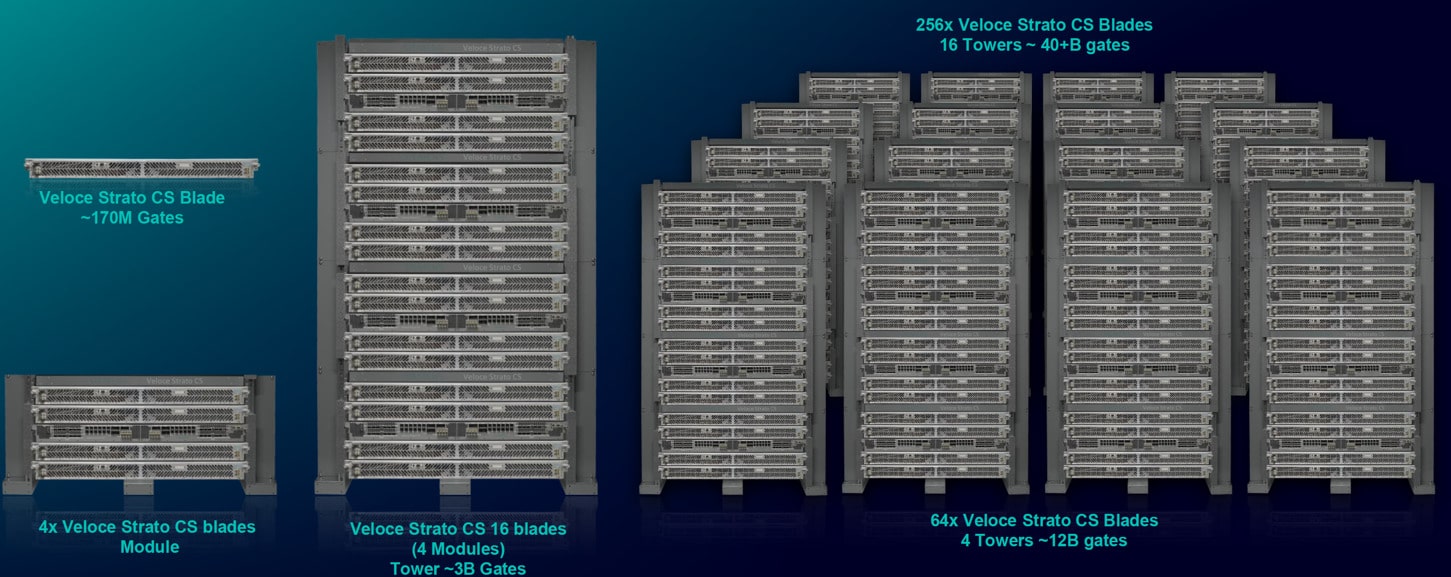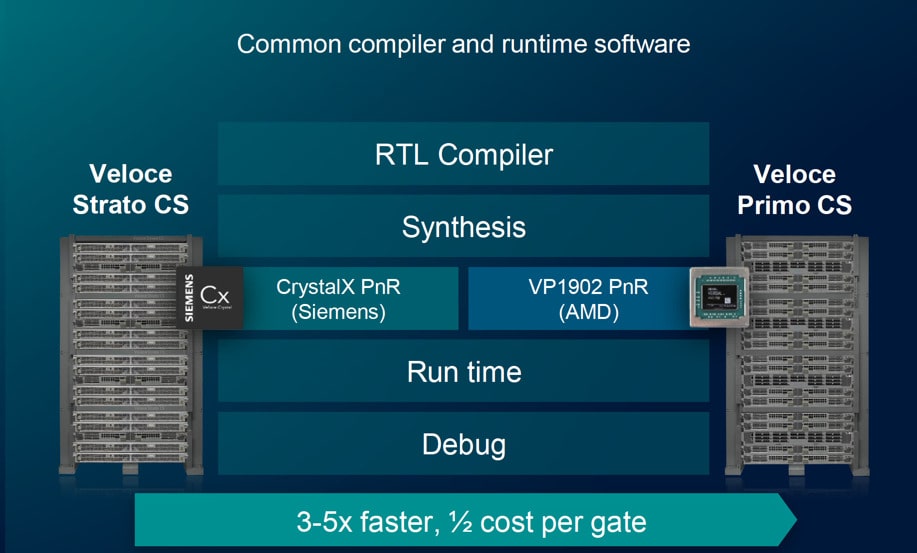General purpose CPUs have run most EDA tools quite well for many years now, but if you really want to accelerate something like simulation then you start to look at using specializedhardware accelerators. . Emulators came onto the scene around 1986 and the processing power has greatly increased over the years, mostly in response to the demands of leading-edge companies designing CPUs, GPUs and more recently AI-based processors and hyperscalers that need to accelerate simulation to ensure that designs are bug-free and will actually boot-up and run software properly before tape out.
All modern CPU, GPU, Hyperscalers, and AI processor teams are using emulation to accelerate the design and debug of their SOCs, with transistor counts ranging from 25 billion to 167 billion transistors, often using chiplets as the massive number of transistors no longer fit within the maximum reticle size. These systems are challenging to verify, and using a general purpose CPU to run EDA simulations is no longer fast enough, so emulation must be used. Design teams on projects for AI and hyperscale applications are running software loads that demand quick analysis so that trade offs can be made between power and performance.
Emulation is used early in the design flow, when there are lots of design changes happening, so having flexible debug and fast compile features are critical for quick turn-around. When the RTL coding has become stable enough and there’s less debugging required, then a faster simulation approach using enterprise prototyping can be started as early firmware and software development can begin. The third stage of accelerated simulation follows and is traditional FPGA-based prototyping, where software developers are the main users, where performance and flexibility is prime need.
With the three hardware-assisted acceleration techniques you could opt for using three hardware systems from multiple vendors, however I just learned about a new announcement from Siemens where they have launched a next-generation family of products that covers all three use cases and they call it Veloce CS.
- Emulation – Veloce Strato CS
- Enterprise Prototyping – Veloce Primo CS
- Software Prototyping – Veloce proFPGA CS
For Emulation the Veloce Strato CS is using a domain-specific chip called the CrystalX, which enables fast, predictable compile during design bring-up and speeds iterations. Designers are more productive by using native debug capabilities, and the platform has scalability to fit the biggest designs. On the prototyping side the FPGA-based Veloce Primo CS is using the latest AMD Chip, the VP1902 Adaptive SoC, which has 2X higher logic density, and an 8X faster debug performance.
Previous generations of emulators often had unique hardware form factors, but with the new Veloce CS Siemens adopted a blade architecture, which fits into modern data centers more easily.
The previous generation of emulators from Siemens was called the Veloce Strato+, introduced in 2021; now with the new Veloce Strato CS you enjoy 4X gate capacity, 5X performance gain, and a 5X debug throughput boost. Scalability now goes up to 40+B gates, and the modular blade approach spans from 1 to 256 blades.

For enterprise prototyping Siemens offered the Veloce Primo beginning in 2021; with the new Veloce Primo CS your team will benefit from 4X gate capacity, 5X in performance, and a whopping 50X in debug throughput. Once again, blades are used with Veloce Primo CS, providing a range of 500M gates, all the way up to 40+B gates.
The following diagram shows the common compiler, debug and runtime software shared between the emulator and enterprise prototyping systems, with the major difference being that the emulator uses the custom CrystalX chip and the enterprise prototype employs the AMD VP1902 chips.

By using a blade architecture these systems require only air cooling, so no expensive water cooling is needed.
The third new product introduced is Veloce proFPGA CS, and it gives you 2X gate capacity, 2X performance, and a stunning 50X debug throughput advantage over previous generation proFPGA system. Scaling starts out with just a single FPGA clocking at 100MHz, then growing up to 4B gates. The Uno and Quad configurations are well suited for desktop prototyping, then each blade system has 6 FPGAs.
Prototyping used to be limited by slow design bring-up, but now with Veloce proFPGA CS engineers will experience efficient compile without manual RTL edits, enjoy automated multi-FPGA partitioning, benefit from timing-driven performance optimization, and become more efficient with sophisticated at-speed debug due to VPS SW.
Summary
Siemens designed, built and announced three new hardware-accelerated systems that have some immediate benefits, like:
- Lower power to cool
- ~10Kw/Billion gates
- Fits into data center using blades and air cooling cold aisle – hot aisle air flow
- Multi-user support, enabling 24×7 use
- Emulation, Enterprise Prototyping, FPGA-based prototyping
Early users of Veloce CS include tier-one names like AMD and ARM. The new Veloce has impressive credentials, certainly worth taking a closer look at, and they span all three types of hardware platforms. Your team can choose just the right size for each platform to meet your project capacity.
Related Blogs
- Emerging Stronger from the Downturn
- Achieving Faster Design Verification Closure
- Load-Managing Verification Hardware Acceleration in the Cloud
- Today’s SoC Design Verification and Validation Require Three Types of Hardware-Assisted Engines
- Verifying 10+ Billion-Gate Designs Requires Distinct, Scalable Hardware Emulation Architecture
- EDA in the Cloud with Siemens EDA at #59DAC






Comments
One Reply to “New Emulation, Enterprise Prototyping and FPGA-based Prototyping Launched”
You must register or log in to view/post comments.